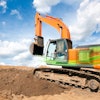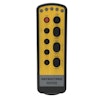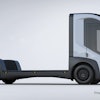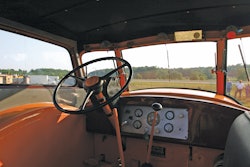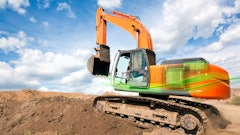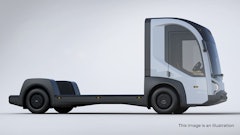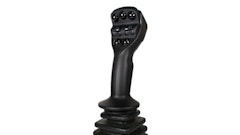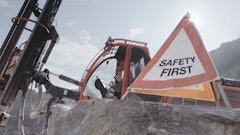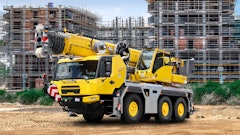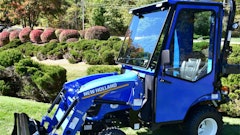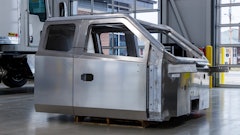When it comes to operator comfort, the two key selling points for any vehicle are space and visibility. That's why CNH's line of self-propelled windrowers, sold as the Case IH WDX 2 and New Holland HW Series Speedrower, appeals to commercial hay harvesters. As agricultural-machinery cabs go, they are cream-of-the-crop. The operator is perched atop the machine surrounded on all sides by a broad sweep of curved glass, giving the user an unobstructed view of the entire width of the header, which houses the blades that slice plants and lay them on the ground to dry.
But, big interiors and floor-to-ceiling windows add to the demands placed on another comfort item: the HVAC system. All that glass raises solar loads and increases the burden on the air conditioning system. Voluminous cabs require more robust specifications in order to circulate, pressurize and filter the air inside.
"As a trend, we're seeing bigger cabs and more window glass in just about every type of vehicle we design for," says Gary Hansen, vice president of engineering at Seattle-based Red Dot Corp., which designs and manufactures HVAC systems for a wide range of commercial vehicles, including the CNH products. "It's a challenge to balance the benefits of these features — wraparound glass, vista windows, condo sleepers — with truly effective climate control, which, in and of itself, is a big part of the comfort equation for the operator."
That is especially true of commercial hay producers, who orient their fields to the south and depend on sunny, dry weather to optimize the quality of their yield. Hay — dried grasses and legumes like alfalfa — has more nutritional value to grazing animals when the plants can be dried quickly and collected for storage. Equipment operators are exposed to the sun for long periods of time (up to 16 hours a day in June and July) as they mow their fields.
Case IH and New Holland make air conditioning standard only on deluxe-model cabs. "A windrower is an expensive piece of machinery," says Hansen. "CNH wanted an HVAC system that would provide the level of value and comfort customers expect when they make that investment."
Specific ideas in mind
Most of Red Dot's customers approach a project with specific HVAC performance in mind, notes Craig Warnock, lead project engineer for the off-highway group at Red Dot. "They need expertise in heat transfer, refrigerant management, diagnostics, and control systems," he explains. "We can work with the cab designers to determine the location of the HVAC unit in the vehicle, the routing of the ductwork, the location of the supply vents in the cab and other factors."
His group uses many of the same tools as their customers for design and finite element analysis, such as Pro/ENGINEER modeling software and CFdesign which turns each MCAD workstation into a fully interactive fluid-flow bench and thermal test rig.
"Our MCAD system is linked directly to our manufacturing operation," Warnock says. "Instant communication between our engineers and the factory floor means greater accuracy, less design time for new products and quicker modifications to existing ones."
The HVAC unit Red Dot developed for CNH mounts on the exterior of the vehicle and delivers 497 CFM of airflow, "one of the highest-airflow systems we produce," says Warnock. It's capable of cooling a cab from 125 F to 75 F in 15 minutes while in 110-degree ambient temperature. The heater, while not of primary concern on a vehicle generally used in warm climates, can raise the cab temperature to more than 70 F within five minutes at 30-degree ambient conditions.
"It's successful because CNH was committed to making sure we had what we needed to deliver the HVAC performance they expect," says Dave Clore, an engineer with Red Dot's off-highway group who worked with Case IH and New Holland on the windrower project.
Steps to a successful relationship
Clore and Warnock offer some simple steps you can take as you prepare to talk to an engineer who specializes in mobile HVAC:
- Heat loads. When you develop your pull-down requirements and other specifications, account for every potential heat source. The obvious external heat source on the Case IH WDX 2 and New Holland HW Series Speedrower is the engine fan: it blows forward, onto the glass area behind the operator.
Other items are more easily overlooked. "Hydraulic tanks or hoses, the amount of sheet metal in the cab, hydrostatic transmissions, high underhood heat, the predominant color of the interior — any one of these items can affect the heat load we're trying to manage," Clore says. "We need to know as much about them as possible."
- Airflow. Cab designers have a CFM target in mind, but airflow is affected by several factors. One is the size of the ducting and the twists and turns it takes on the way to the distribution plenum or vents.
"You'll lose temperature the longer the ducting is," Clore says. "We might suggest adding insulation to the outside of the duct and leaving the interior smooth to promote better airflow."
- Testing. Red Dot's Advanced Engineering and Test Group operates one of the most sophisticated research and test facilities in the industry.
The company's calorimeter can precisely simulate a range of underhood and in-cab conditions. Its environmental chamber is 48 ft. long, 18 ft. high and 18 ft. wide — big enough to subject a complete vehicle to an air temperature range of -20 F to 140 F, with relative humidity from 20% to 95%.
Red Dot engineers can test the heating and cooling capacity of the unit and develop an airflow pressure-drop curve to help the customer integrate it with the cab.
The most thorough results occur when the customer provides a complete vehicle for testing. "We want to be able to instrument the vehicle with pressure transducers, hook up a dynamometer, and build up a lot of engine heat and hydraulic loads to really load it up and fine-tune the performance of the A/C system in the test chamber."
- Early involvement. "The sooner you can bring us into the design process, the better," Warnock says. "We can help with the sizing of the condenser, compressor, the compressor rpm, the size and routing of the lines. We'd like an active role in the fan selection, application of insulation and sound-dampening material, blower placement in relation to the operator, and maximum velocities for the distribution ductwork in the cab. Designing the whole system gives us more flexibility as we balance performance and cost."
With the windrower project, Red Dot was replacing a unit from another supplier. "On one hand, issues with the previous system are well documented — the customer knows what needs to be fixed," he says. "On the other, we have to work within a preexisting space. Also, customers not only want better performance from a replacement unit, they want lower cost.
Typically, increasing performance is not as much of a challenge as reducing cost."
- Beyond the prototype. The total cost of the system goes beyond the initial design, says Clore. "We bring our warranty people to review the unit for serviceability and develop standard repair times for warranty claims," he explains. "They'll have suggestions for the customer to reduce the cost of maintaining the vehicle."
Likewise, proper installation on the production line is one of the keys to reducing failure rates. "No matter how hard you work at the design stage, the people who install the component have a lot of valuable input," Warnock says. "It can reduce the overall cost of the unit if the installation is efficient and easy to do."
